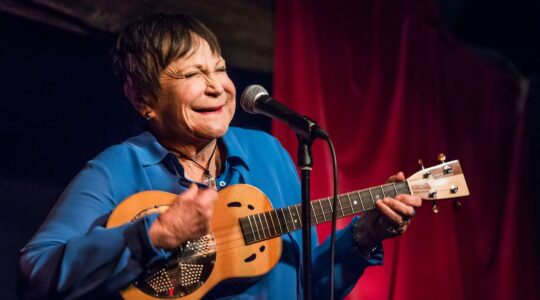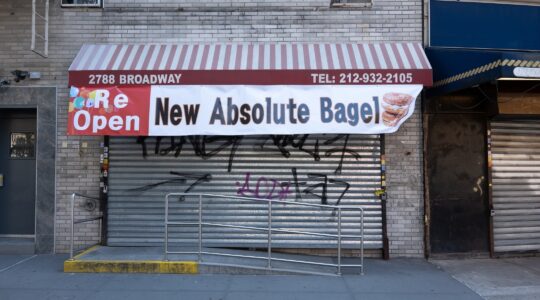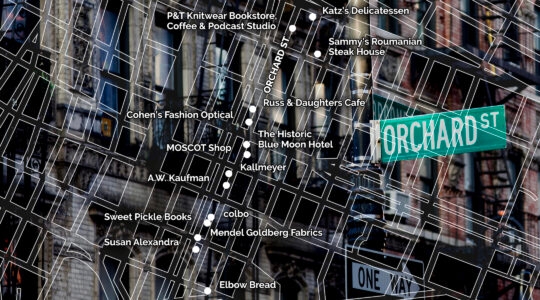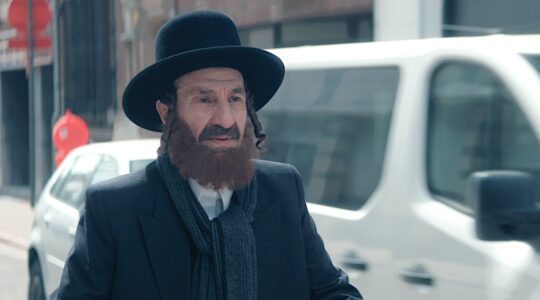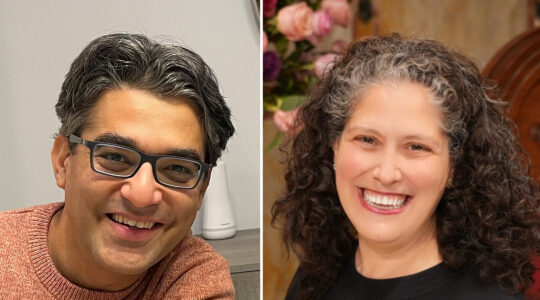When members of the Upper East Side’s growing Sephardic community head to Rosh HaShanah services next week, some will be searching their souls in an unorthodox spot — a synagogue within a new community center that houses a pool, a health club and a well-appointed kitchen in which would-be chefs can learn the authentic Syrian and Moroccan recipes.
The presence of a synagogue, the Ohel Moshe Synagogue, at the heart of the Moise Safra Center, which will have a soft opening for the High Holidays before a grand opening in January, will set it apart from other JCCs, which generally do not offer synagogue services. So will the niche it is trying to carve out in an increasingly crowded cultural scene on the Upper East Side.
With a 14-story perch on East 82nd Street just off Lexington Avenue, the new Sephardic center is 10 short blocks from the 92nd Street Y, the long-established “Jewish Lincoln Center,” which itself is undergoing a $180 million, top-to-bottom renovation. It’s close by the East 89th Street location of Park Avenue Synagogue’s year-old, $80 million Eli M. Black Lifelong Learning Center, which hosts study and lecture series co-sponsored by the Shalom Hartman Institute, discussions of current books and films and introduction to Judaism classes. And it’s a short cab ride from the Temple Emanu-El Streicker Center (formally the Skirball Center) on East 65th, which in recent years has become a major player on the cultural scene, hosting former President Barack Obama and other high-profile newsmakers and A-list celebrities — events that don’t necessarily cater to an exclusively Jewish crowd — as well as creative Jewish programming.
Into the mix comes the Safra Center, which will put more parochially Jewish, and especially Sephardic, cultural programming front and center.
David Miller, executive director of the Safra Center, was quick to praise the center’s Jewish neighbors in the area, including the 92nd Street Y, for their cultural offerings. “We don’t see ourselves as competition,” said Miller, stressing a need for more Jewish institutions to serve the thousands of Jewish residents on the Upper East Side. “I think we’re going to want to concentrate more on the Jewish stuff.”
And perhaps on decidedly pro-Israel programming, which would seem to meld with the political leanings of the Sephardic community. Miller pointed to a sample schedule that includes a showing of visiting exhibits from the Israel Museum and a special speaker event with Lior Raz, creator of the Israeli hit TV series “Fauda.” He said he hopes to make Yom Ha’Atzmaut a major event on the Upper East Side and focus the Safra Center on Israel-related events, such as a lecture with Michael Oren, the Knesset member and former Israeli ambassador to the U.S. “We’re unabashedly pro-Israel and support the people who live there,” said Miller.
The new center, a sleek glass tower named for the famed philanthropist and banker from Brazil and designed by PBDW Architects, will serve a growing Sephardic community that traces its roots to the Brooklyn neighborhoods of Midwood and Flatbush, which have served as the home base for the Syrian community for decades. As families have begun to move from Brooklyn to the Upper East Side, the neighborhood has also been a draw for Sephardic Jews of other traditions from around the world, with some coming from as far away as France or Brazil. Community leaders estimate that a few thousand Sephardic families have moved to the neighborhood from Brooklyn in recent years.
Many attribute the community’s growth to Rabbi Elie Abadie, who was involved in the project in its early stages. Abadie was the founding rabbi at the Edmond J. Safra Synagogue on East 63rd Street, which was founded in 2003. He served there until 2017, when he was ousted in a contentious move and has since begun a new Sephardic synagogue on 71st Street and Third Avenue. In addition to the new community center and the synagogues, the community can also count the Sephardic Academy of Manhattan, a growing preschool and elementary school which recently purchased a building on 74th Street, among its expanding list of community institutions.
In many ways, the Safra Center is upending the classic JCC model, and not only with its 300-seat synagogue. It is also trying out a new business model. With no summer camp or preschool to bring in young families and reliable tuition payments, the center will rely on pricey memberships — from $1,000 for young professionals and $1,800 for singles to $2,800 for couples and $4,200 for families — as well as event space rentals and the support of donors. Miller declined to disclose the budget for the project.
“We’re willing to try things,” said Miller. “We have a lot to learn from how to run things and I think we’re going to have a lot to teach also.”
For the Syrian community, the establishment of a community center solidifies the Upper East Side’s status as a viable satellite community. The idea of moving outside the tight-knit community’s Brooklyn enclave, without the community resources and safety in numbers that exist there, may have scared some would-be East Siders from making the move. The existence of a community center, a major piece of the community’s infrastructure, may change that. Sephardic heritage will take center stage at the new center, with a kitchen built to host Sephardic cooking classes. The center’s synagogue will follow the Sephardic tradition.
“We need a safe environment for the youth, for the community to exchange ideas and to socialize,” said Rabbi Abadie, who was involved in the early planning of the center. “The fear of assimilation is much greater in Manhattan than in other parts of New York; there’s a lot of anonymity in Manhattan.”
The opening of the Safra Center will be a test of sorts for what has long been an insular community. How will the Syrian community, long known for its traditional and insular nature, adjust to becoming one of many groups in a neighborhood long dominated by Ashkenazic institutions?
So far, the Upper East Side’s Jewish community, including the center’s neighbor across the street, Congregation Or Zarua, a Conservative synagogoue, seems to be eager to collaborate. Rabbi Scott Bolton, spiritual leader of Or Zarua, spoke with excitement of future collaborations, envisioning joint block parties to celebrate holidays like Simchat Torah and Purim. The Sephardic Academy of Manhattan, which currently serves students in preschool through first grade and is planning to expand, is located at Or Zarua as it renovates its recently purchased building on 74th Street.
“It is a great opportunity for 82nd Street to become a major center for Jewish traffic in a whole new way,” said Rabbi Bolton. “The Sephardic world is taking its rightful place in one of the most diverse Jewish spots on the face of the earth.”
Rabbi Chaim Steinmetz of Congregation Kehilath Jeshurun, an Orthodox synagogue on 85th Street, agreed. “Another substantial Jewish institution will absolutely enrich the neighborhood,” said Rabbi Steinmetz. “We look at this as an opportunity for all the Jews on the Upper East Side.”
Rabbi Bolton even mused about renaming 82nd Street “King David’s Way.”
“If Vilna could be the little Jerusalem in Lithuania, we could be a little Jerusalem on the Upper East Side,” he said.
The New York Jewish Week brings you the stories behind the headlines, keeping you connected to Jewish life in New York. Help sustain the reporting you trust by donating today.
